Recoiling from my first exposure to the Evoque convertible, with a bemused ‘what the…?’ emerging from my open mouth, my attitude soon changed to a ‘why not…?’. A sizeable chunk of Land Rover’s Millennial success has arisen from its Range Rover Evoque model line, a factor worth reflecting upon, when contemplating the rights and wrongs introduced by such a polarising new car.
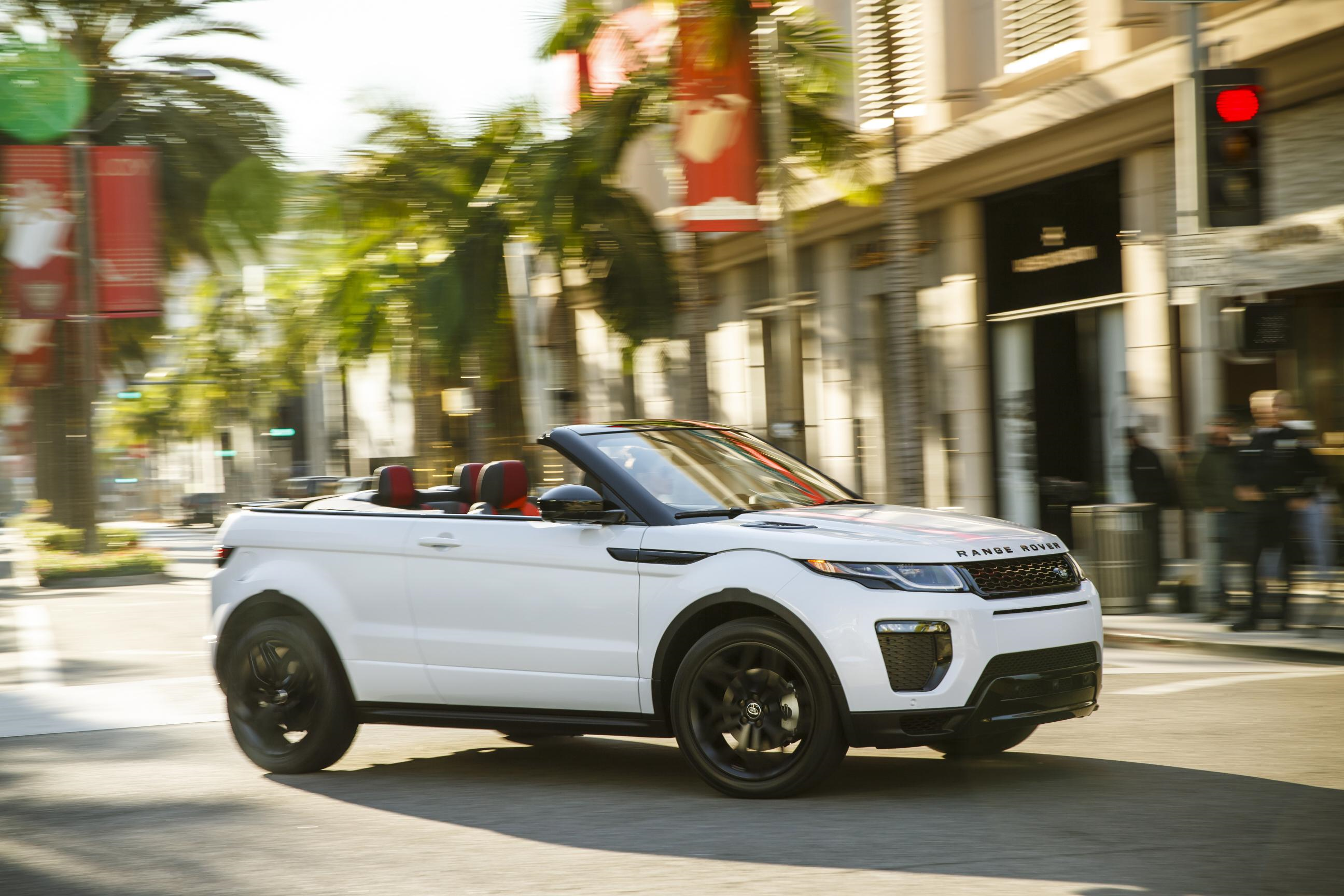
It is the veritable lack of a ‘grey area’ that has the effect of creating a ‘look at me’, love-vs-hate consumer relationship. In many ways, it is a perfect scenario, because everybody will talk about it and spread the word and blandness simply has no place in the equation. Clever Range Rover.
Styled to within an inch of its existence, the Evoque truly evokes very little. It is abundantly clear that it is from the Range Rover blood-line, early editions featuring a three-door option, much like the original Range Rover did in 1970, when it shocked the new car market. However, it possesses much the same ‘comic-book’ appeal as a BMW Mini, the Countryman 4x4 version of which is vaunted as a direct rival to Evoque. Yet, it is that same ingenuity that makes potential buyers flock to both brands’ dealer showrooms, as much to confirm what their eyes have witnessed, as to place their funds on the roulette-wheel of retail pricing.
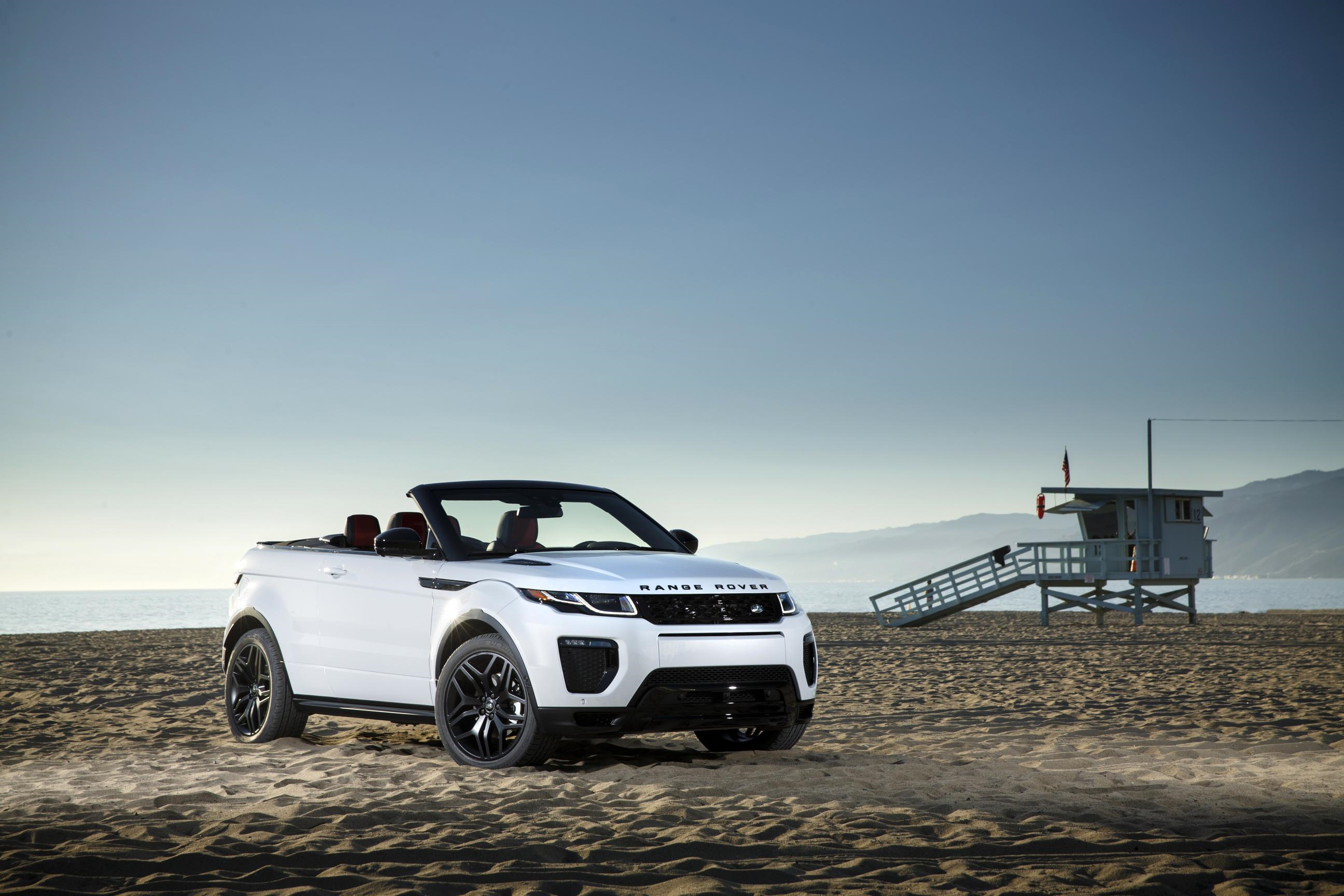
Carrying a price premium (although it is not relatable directly) of around £12,000 over the base cost of a metal-roofed Evoque (list prices start at £34,105), is something that can only be eradicated by introducing Forces Cars Direct discounts but, even then, if you truly desire an Evoque Convertible, it is a costlier proposition. Having stated that, ALL drop-tops are more expensive than their tin-top progenitors. It is one of the elements of desirability and explains the car’s relative rarity.
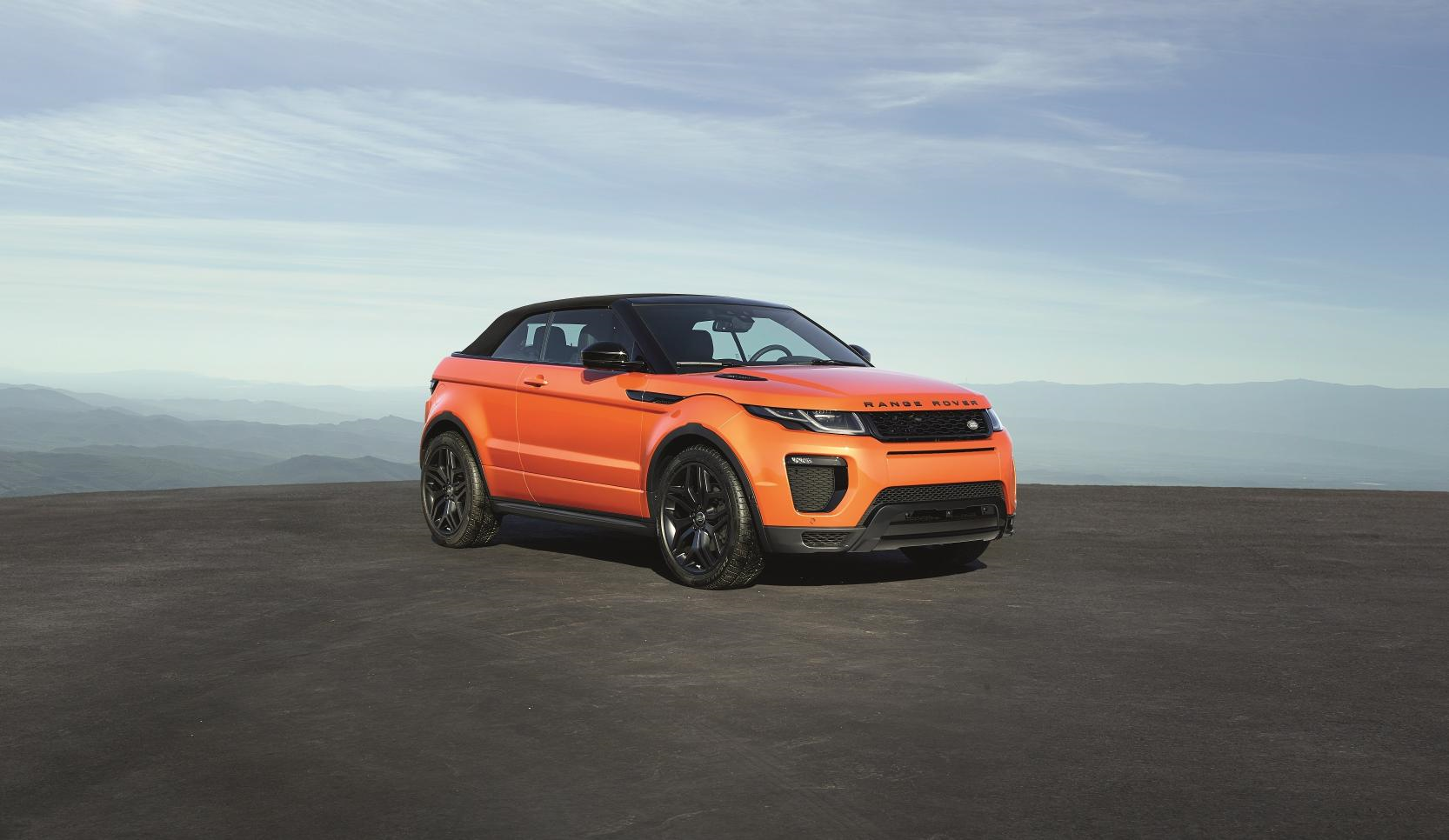
The prospect of tackling an off-road ground, in moderately warm weather conditions, and being able to smell the environment, as well as gain the ultimate panoramic view from the commanding seat positions, in an Evoque convertible’s open cabin, needs to be experienced to be appreciated. If ‘getting in touch with nature’ is high on a personal transportation list, avail yourself of the Evoque opportunity. There is none better. Besides, possessing the same off-road qualities of the donor Evoque, which Land Rover’s reputation depends on, is a virtual guarantee of ultimate accessibility, whether venturing off-road, or not.
A vital aspect of the convertible’s core engineering lies in replacing the body rigidity lost, when lopping-off the car’s top. A few hundred kilogrammes of extra-strengthening are applied around and below the bodywork. The result is a miraculous retention of solidity, for which the regular Evoque is renowned. A phenomenon known as ‘scuttle-shake’, which used to plague all manner of convertible cars, is absent thankfully. It is only the worst of road surface imperfections that can set-up a mild tremor, when the convertible roof is lowered. With it erected, it is imperceptible.
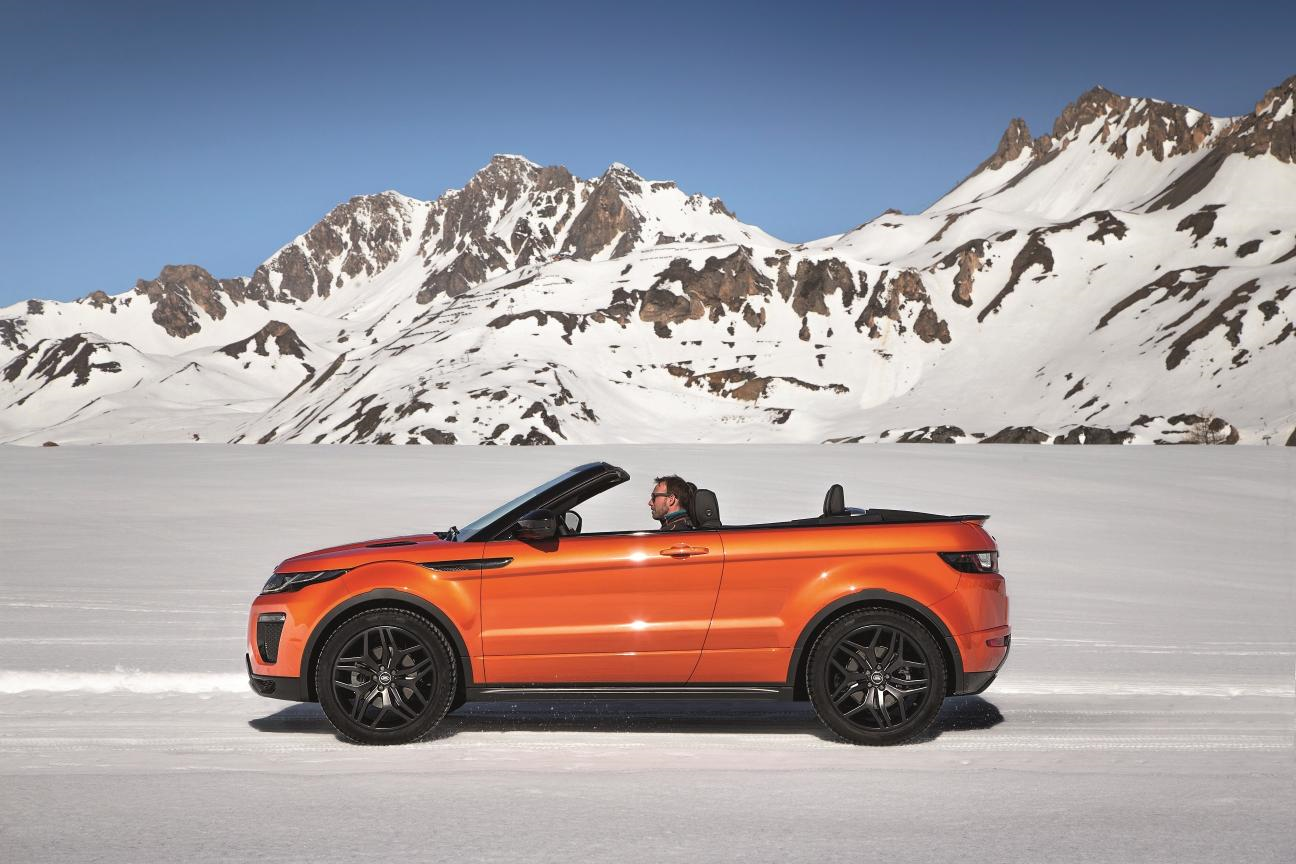
Yet, there is a recognisable downside. Tipping the scales at almost two tonnes, the fairly compact Evoque is a heavyweight, which blunts the anticipated performance figures from the otherwise ‘unbluntable’, 177bhp, 2.0-litre TD4 engine. A 0-60mph time of 10.3s, while hardly ‘pedestrian’, seldom feels as brisk as the tin-topped Evoque, although a top speed of 121mph keeps it within autobahn-reach, for the seasonal trek to the Austrian Alps. Where it is most noticeable is in the Official Combined fuel economy of 40.9mpg and the heftier tax liability inferred by its 177g/km CO2 emissions and luxury car price tag. Live with those figures and open-topped Evoque-ing will place no limits on your view of the horizon.
Driving through an automatic transmission that shifts lazily up and down the ratios does not invite energetic motoring. However, it conveys a relaxed impression that is not at odds with the car’s overall, laid-back demeanour.
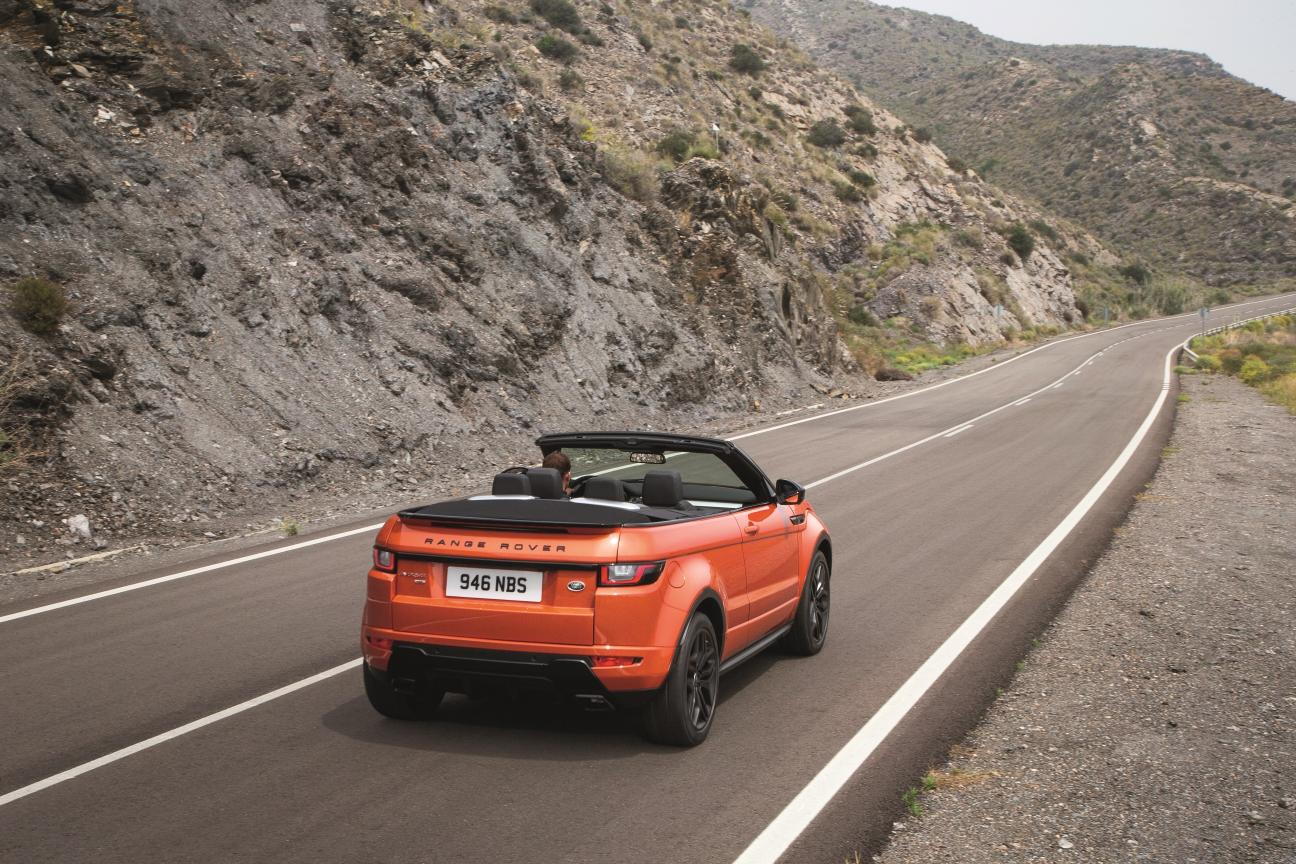
Riding on large diameter alloy wheels introduces that unhelpful imbalance of a firm ride quality, although body roll can be pronounced, if the Evoque convertible is pushed hard through corners. In fact, it is almost the only occasion, when the extra strengthening applied to the car can be felt. The application of judicious chassis electronics ensures that the car’s inherent stability is uncompromised and grip levels are high. With the top down, the additional road noise generated by stylistically fat tyres is noticeable, although it is not distracting. Install the ‘anti-buffet’ screen and annoying wind-rustle is removed most efficiently. With the top up, an action that can be completed within 15s, even travelling at up to 30mph, the cabin is a charmingly refined and well-insulated place to reside away from the elements.
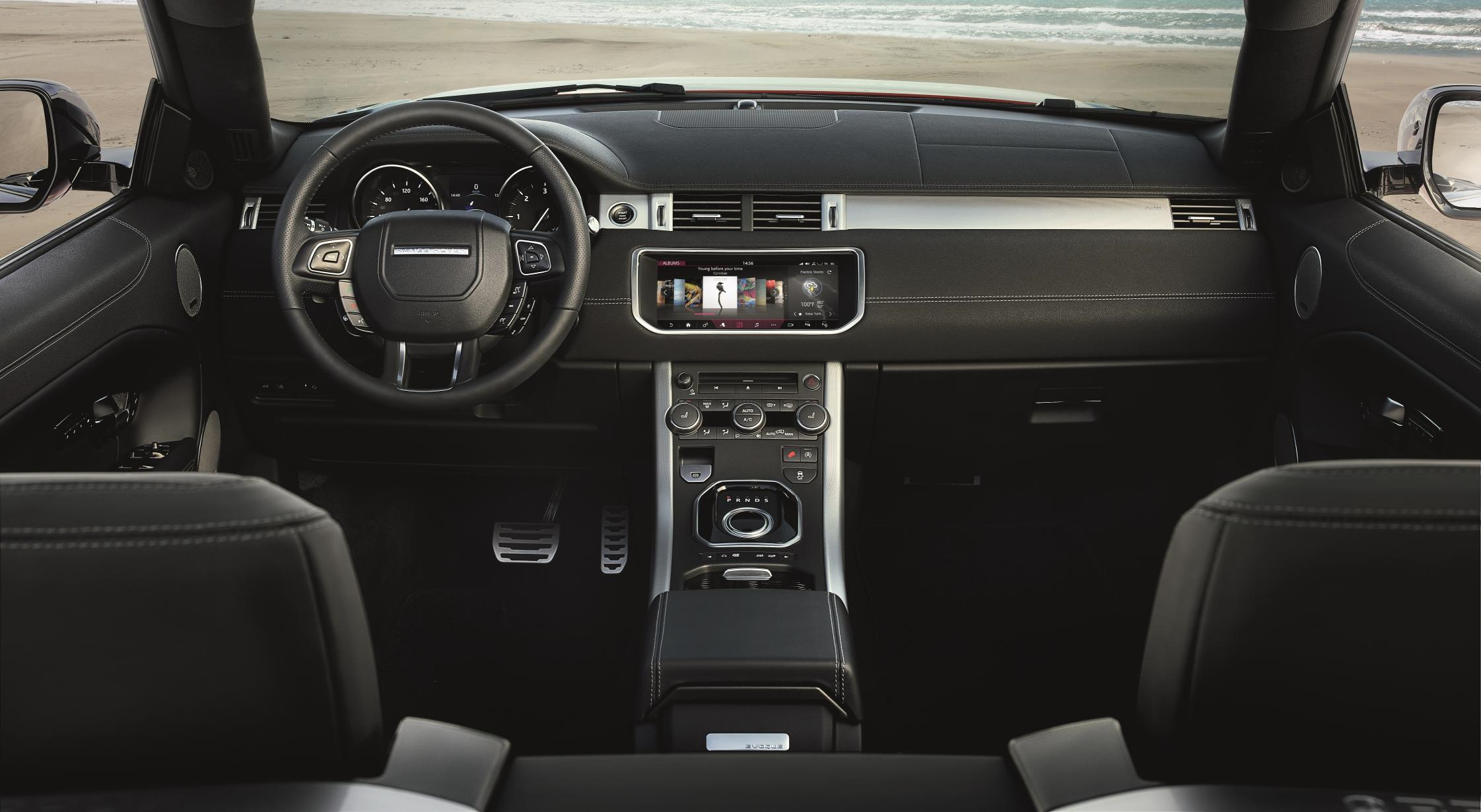
Personally, I am a fan of Evoque’s dashboard layout and interior accoutrements. The fit and finish is first-class and the dials are legible. Of course, there is a raft of control switchgear on the steering wheel spokes, most of which relate to the on-board computer, stereo system and connectability, which is good overall. The auto-box works through JLR’s ‘pop-up’ selector and the parking-brake is an electronic device. There is a satisfying clarity to the car’s interior detailing and the blend of soft-touch materials and high-quality leather lend the Evoque convertible an essential high-end status.
Space is always at a premium in drop-tops but the up-front cockpit will raise zero complaints from occupants, although the rear compartment is slightly more cramped, while remaining significantly roomier than most convertible models. Use the wind deflector and you will lose the rear seats too. In having designed the folding roof mechanism to be as inobtrusive as possible, the rear seat is narrower than the regular car and there is not as much useful boot space. In the HSE trim of the test car, a ski-hatch does connect boot to back seat area.